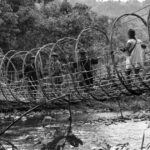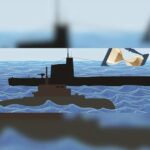
SOURCE: ANI
In the twenty months that Jawaharlal Nehru lived after 1962 war with China, he did a great deal to restore India’s defence capability and strengthen the Indian Army and felt personally responsible for its earlier decline, says a new book which notes that India’s first Prime Minister became “very conscious of the problems he would be leaving behind, including Kashmir, Tibet and relations with China”.
The book ‘Reporting India: My Seventy-Year Journey as a Journalist’ by veteran journalist Prem Prakash, says that Nehru had ignored the modernisation of India’s armed forces at the outset of his term in office.
“He believed firmly in his political theory that, following the horrors of World War II, no nation would resort to war to solve international disputes. That ideology lay in tatters when China attacked India’s borders and an ill-equipped Indian army proved no match for them,” it says.
The recently launched book goes into reasons for India’s 1962 debacle which the author covered from the frontline.
“Troops that had been flown in and marched up to Sela were digging trenches. Here was the enemy almost on top of us and we were still digging trenches. The Chinese simply came at us in waves. A huge Chinese propaganda campaign had already demoralised the Indian military. That is what the Chinese did in Korea. Indian troops fought bravely enough but this was a different terrain.”
“The condition of the Indian Army was pitiful. Straight from the plains of Punjab, units arrived to find they had insufficient transport. They were marching up a mountain in lightweight summer uniforms, in the wrong boots and with inadequate weapons. Even as I was filming this, I was filled with a sense of foreboding: this was not going to end well,” the author says.
The author, who is Chairman of ANI, recalls that a few days after the Chinese declared ceasefire, Nehru arrived in Tezpur “and asked to see me”.
“He knew that George Verghese and I had stayed till the end. I told him all that I had seen in NEFA, Sela and other points where everyone only talked about the Chinese coming in waves. I further told Panditji that our Indian troops were full of energy despite all odds and willing to fight but I felt the Chinese had outflanked them. Thus the move to vacate the north bank of Brahmaputra in Assam and Tezpur was perhaps made by the Indian Army in panic,” says the author.
He notes that the Army was regaining its confidence as, following the 1962 debacle, the whole business of “politically motivated promotions and other efficiencies ended”.
“We were lucky that we still had men like General Sam Manekshaw surviving in the Army before they could be purged by the political elements running the Congress at that time,” he says.
The author says that following the war with China, the strength of Indian Army was raised, weapons such as automatic rifles acquired and while the Americans were refusing to supply certain equipment, Nehru was getting them from Russia.
“It is my belief that in the 20 months that he lived after October 1962, Nehru did a great deal to restore the defence capability of India and strengthen the Indian Army. He felt personally responsible for its earlier decline and needed to reclaim the confidence of Indian people. Nehru became very conscious of the problems he would be leaving behind, including Kashmir, Tibet and relations with China,” says the author.
The author was at the Prime Minister’s house on May 24, 1964, when Nehru fell critically ill and soon afterwards passed away. “It is my belief that it was the Chinese attack and the Indian defeat which cut short his life,” he says.
The book also gives glimpses of Nehru’s personality and his governance philosophy.
“I have long believed that as a leader, Jawaharlal Nehru represented the hope of a great majority of Indians. He had his failings. But he had the vision needed to develop a newly independent nation and for India to join the international community on equal terms. He truly loved India and the people of India trusted him implicitly,” says the author.
He says upon taking over the government, Nehru did not nationalise many private industries except for the aviation sector.
“Panditji did not believe in wasting money on nationalisation but in using government funds to create new assets. He believed in Fabian socialism, promising equitable distribution of nation’s assets and gains…Thus giving up the free market economy that the British had left behind, India’s first Prime Minister slowly began implementing a socialist economy in the country.”
The book has interesting personal reminisces of the author with the country’s first Prime Minister.
“Panditji took a keen interest in my work, knowing my pictures would be seen abroad. Throughout his tenure as prime minister and external affairs minister, he personally took note of India’s image abroad even though this was the job of the publicity division of the foreign office,” says the author.
He recalls his initial days in journalism and how during an interview for an American network Nehru helped him.
The network had sought Prime Minister’s views on what the 20th century would hold for Indian children.
“As he sat down for our exchange, he asked me the subject of the interview and how I intended to handle it. Raw as I was, I simply handed him the cable from the American network. He read it and suggested that I first start the camera, then ask the question, go back behind the camera and record his reply. The interview turned out to be a big hit in America,” the author recalls.
Prem Prakash is a pioneer in Indian journalism and in his long career has covered some of the most important stories of post-Independence India including the 1962 war with China, 1965 and 1971 wars against Pakistan, Emergency, the assassination of Indira Gandhi and Lal Bahadur Shastri’s fateful Tashkent journey. The book provides a detailed account of his professional life and stories he covered from Nehru’s demise to rise of Prime Minister Narendra Modi.
The 225-page book is available on Amazon and Flipkart.






